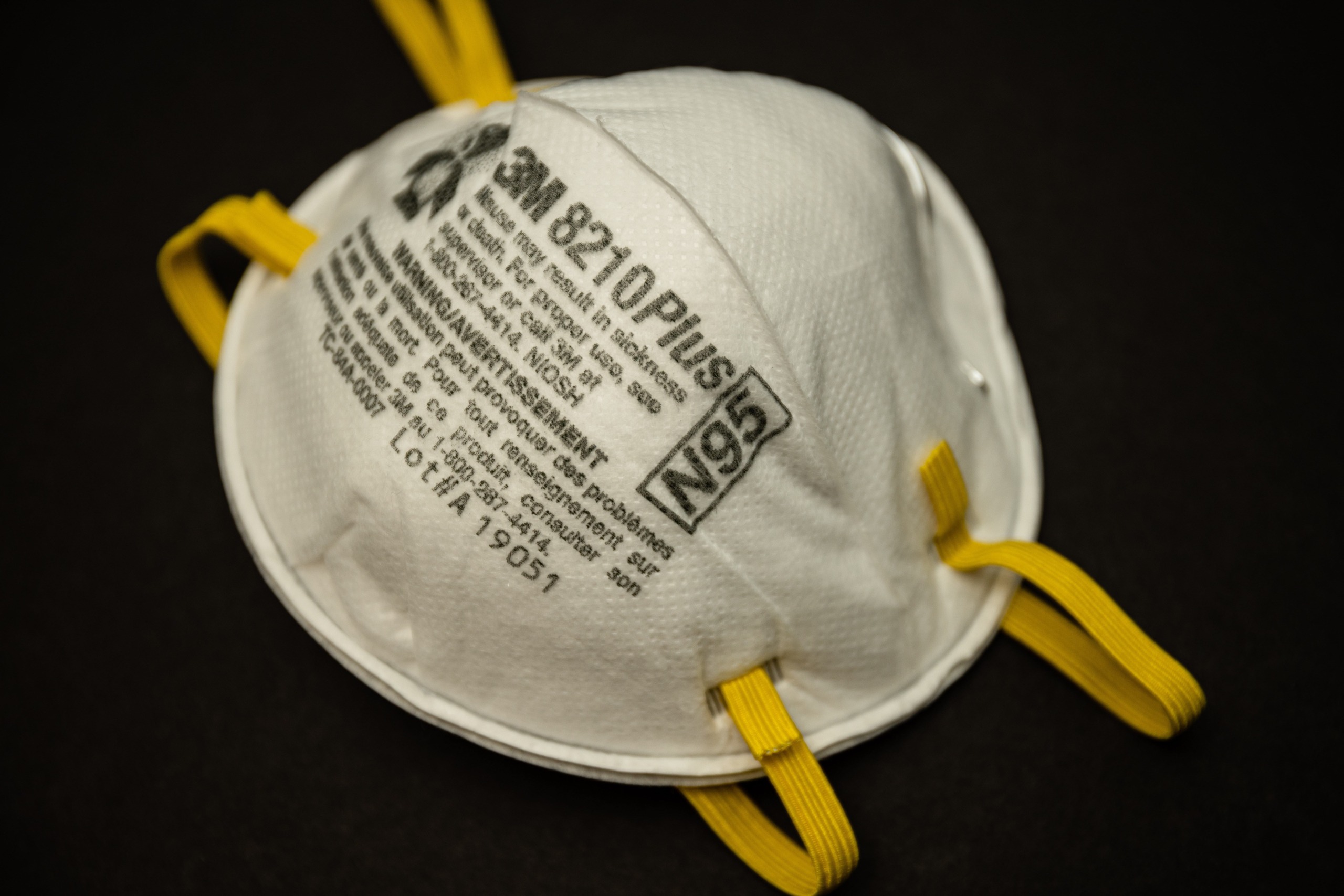When you think of pollution, you might imagine dense layers of smog blurring a city’s skyline, a digestive system full of plastics, or the shimmer of an oil slick. However, there is another class of pollutant that has become equally ubiquitous whilst remaining altogether invisible.
PFAS, known as “forever chemicals,” are inside of you and me, and they aren’t going anywhere anytime soon. As the negative consequences of these chemicals on our own health and the health of our environment become clearer, public pressure is mounting for the European Union (EU) to take action.
What are forever chemicals?
Forever chemicals refer to a class of man-made compounds known as per- and polyfluoroalkyl substances (PFAS). PFAS are molecules that contain chains of fluorine-carbon bonds — one of the strongest chemical bonds known to nature and incredibly difficult to break.
The term “forever chemicals” is itself a play on words that refers to this chemical structure. Coined in 2018 by Harvard researcher Joe Allen, the “f” in “forever” stands for “fluorine” and the “c” stands for “carbon.”
This means that these compounds, which do not occur naturally, also do not degrade naturally. Some PFAS are thought to take more than 1,000 years to degrade in the environment.
In the human body, they are excreted more quickly than they are broken down, but exposure to PFAS typically occurs faster than the body can flush them out. This causes the chemicals to accumulate in our bodies over time; testing in the United States found PFAS in the blood of 97% of adults.
This would not be a problem if these chemicals were harmless but, surprise surprise, they’ve been linked to a whole host of health problems including increased cholesterol levels, infertility, decreased vaccine response in children, and cancer – to name a few.
Research concerning the exact mechanisms by which these chemicals interfere with our body is ongoing, but it is thought that the vast majority of forever chemicals mimic the role of fatty acids – the building blocks of fat – in our bodies.
PFAS are also broadly classed as endocrine-disrupting chemicals (EDCs) due to their ability to interfere with hormone systems. This interference is the root cause of some of the adverse health effects with which they’re associated.
Perhaps these forever chemicals still wouldn’t be a problem if they were used sparingly; of course, they are everywhere.

They are mainly used as surfactants – compounds used to repel oil and water – and can be found in the greaseproof paper that’s used for fast food, ski wax, water-resistant fabrics, stain-resistant coatings on furniture, nonstick cookware, and personal cosmetics products like dental floss, nail polish, and eye makeup.
Forever chemicals’ troubled place in the EU marketplace
3M, an American multinational conglomerate responsible for products like Scotch Tape, Command Strips, and Post-Its, came under fire this summer after it was discovered that the area around their factory in Belgium had PFAS levels hundreds of times higher than recommended.

During the final stages of the construction of a ring road around Antwerp, Belgium’s most populous and second largest city, toxic levels of PFOS, one of thousands of types of PFAS, were discovered in the soil. The toxic concentrations of these forever chemicals led to lost revenue for local farmers and health problems for residents.
There is increasing evidence that the Belgian government turned a blind eye to this contamination so that they could complete the contentious ring road project that had been in the works for twenty years. Additionally, evidence came out in 2018 that 3M knew about the toxic, accumulative properties of their products as early as the 1970s.
About this, 3M said in a statement to Vox in August:
“Fluorochemistries, which include PFAS, are important materials that are used in everyday products. Fluorochemistries are safely used in many modern products for their important properties and can be safely manufactured.”
Nonetheless, on December 20, 3M announced their intention to cease PFAS production by 2025, as legal and cleanup costs rise and public pressure mounts for companies to move away from reliance on these harmful chemicals. Currently, the company’s annual net sales of manufactured PFAS are about $1.3 billion.
In Italy, a chemical production company called “Miteni,” which filed for bankruptcy in 2018, has been accused of causing Europe’s biggest PFAS-related environmental disaster.
Over 350,000 residents in Veneto are estimated to have been exposed to PFOA, a chemical in the PFAS family, through tap water.
While Italy’s National Health Institute (ISS) set the threshold limit of PFOA in the bloodstream at eight nanograms per milliliter (ng/mL), some Miteni employees had levels thousands of times higher. One worker reached 91,900 ng/mL of PFOA in their bloodstream, according to a study commissioned by the regional authority in 2018.
The German Federal Institute for Risk Assessment also released a report last summer suggesting that some population groups in Germany have PFAS limits above acceptable limits.
It is promising that 3M is taking steps of its own accord to reduce its production of forever chemicals, and EU governments are also becoming more aware of the dangers around these toxic compounds.
Related Articles: What Being Labeled Toxic Might Mean for the Future of Plastics in Canada | Five Alternatives to Plastic Food Containers
However, there is speculation that, as the fossil fuel industry is increasingly forced to abandon fossil fuel combustion, those companies will simply fill the gaps left behind by PFAS-production companies and begin to turn their products into plastics and synthetic chemicals instead.
For this reason, public pressure has been mounting for the EU to ban these harmful chemicals outright.
#PFAS can still be found in many products. Once they are in the environment, they stay there for centuries.
What is the EU doing to prevent further emission of PFASs in our air, soil and water? #PFASaction_EU | #ForeverChemicals
— European Chemicals Agency – ECHA
(@EU_ECHA) December 20, 2022
How is the EU responding?
Within the EU, the Classification, Labelling and Packaging (CLP) Regulation covers the legislation that requires manufacturers, importers or downstream users of substances or mixtures to classify, label and package their hazardous chemicals appropriately before placing them on the market.
In October 2020, the EU officially recognised some shortcomings in the architecture and functioning of the CLP and set out plans to address them in the European Chemicals Strategy for Sustainability (CSS). The objectives for updating the regulation were to “better protect citizens and the environment” and “boost innovation for safe and sustainable chemicals.”
First on the list for the proposed changes was to “amend the CLP Regulation to introduce new hazard classes for endocrine disruptors…and apply them across all legislation.” (bolding added)
The long-awaited proposed updates to the CLP, which were expected in summer 2022, were finally announced on December 19, and officially added three new hazard classes of chemicals:
- endocrine disruptors (ED) for human health or the environment;
- persistent, bioaccumulative and toxic (PBT); very persistent and very bioaccumulative (vPvB);
- persistent, mobile and toxic (PMT); very persistent and very mobile (vPvB).
In their Q&As about the changes, the European Commission states:
“The addition of new hazard classes was triggered by evidence supporting the fact that the substances and mixtures were harmful and not fully addressed via the existing criteria. Common to these new hazard classes is that they target substances and mixtures which are very harmful for the human health or the environment.” (bolding added)
The Health and Environment Alliance (HEAL), a European not-for-profit organisation addressing how the environment affects health in the European Union, has released a statement welcoming this proposed change:
“The establishment of subcategories to reflect the different levels of scientific evidence available to characterize the substance properties – known, presumed, and suspected – is an important win for health.”
This statement points to the fact that, although these proposed changes don’t explicitly mention PFAS, these categories cast a broad enough net that they will apply to the vast majority of forever chemicals.
This is because, although it has not yet been rigorously and scientifically proven that every single compound within the family of forever chemicals is harmful in its own right, these categories allow the EU to broadly target all forever chemicals as hazardous substances by relying on characteristics common to all PFAS that have proven to be true.
Those PFAS that have been studied and proven to interfere with hormones in the human body will be included in the first category.
The second two categories should “catch” the other compounds about which there is less available scientific evidence. Even if a specific forever chemical is not a proven EDC, PFAS are, by the nature of their chemical makeup, known to be bioaccumulative and persistent.
By relying on the common characteristics that underly this class of compounds, rather than regulating their common chemical makeup, the EU is setting a precedent that will allow them to regulate any chemicals that show properties of persistence and bioaccumulation. In theory, these proposed changes will account for any new bioaccumulative or persistent compounds that might be created, even if they lack the fluorine-carbon bonds that define the PFAS class of chemicals.
However, whilst this is an important step forward, this proposed update does not address the fact that the CSS had originally promised to eliminate all non-essential use of PFAS.
Measures to #BanPFAS are urgently needed to protect our health and the environment.
EU needs to regulate all PFAS as a group, and phase-out all non-essential uses as promised under the EU #ChemicalsStrategy.
More here
https://t.co/6F5V3GqsRj #HealthNotToxics pic.twitter.com/10GlkuqanC
— Health and Environment Alliance (HEAL) (@HealthandEnv) December 20, 2022
In October, 46 European civil society organisations launched a manifesto to call on the European Commission and all EU Member States to phase out all PFAS use in consumer products (e.g., food packaging, cosmetics, clothing) by 2025 and all PFAS production and use by 2030.
The damage caused by forever chemicals within the EU, both to humans and to the environment, is becoming clearer; many hope that it is only a matter of time before the European Commission takes the next step and begins phasing out the chemicals entirely, rather than simply improving the warning labels on them.
There might be hope on the horizon even sooner though, as a recent breakthrough seems to have developed a system for breaking down these toxic compounds.
A simple, low-energy method uses ultraviolet (UV) light and hydrogen gas to break down some, but not all, forever chemicals in drinking water. These surprisingly mild conditions caused the toxic compounds, which were long assumed to require a great deal of energy to break apart, to fall apart.
Whilst waiting for the EU to act, science has acted faster.
However, these chemicals are nearly as ubiquitous as microplastics worldwide, so the process of removing them entirely from our ecosystems and societies will be a gargantuan task. Who will shoulder the burden of the cleanup, or will it be left by the wayside, along with all the other pollutive waste piling up in increasingly remote corners of the world?
More importantly, if it turns out that these forever chemicals, although still harmful, are easier to break down than previously thought, will the companies who produce them have one more weapon in their arsenal to delay an outright ban?
Editor’s Note: The opinions expressed here by the authors are their own, not those of Impakter.com — In the Featured Photo: Teflon frying pans and the international symbol for poison. Featured Photo Credit: Pawel Czerwinski & Mikael Seegen.










